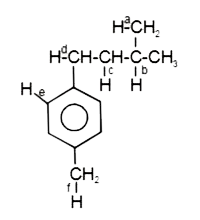Arrange the following single bonds in order of bond energy giving reasons :
C−C,N−N,O−O,F−F
To arrange the single bonds C-C, N-N, O-O, and F-F in order of bond energy, we need to analyze the stability of each bond based on the nature of the atoms involved and the electron-electron repulsions that occur.
1. Understanding Bond Energy: Bond energy is the amount of energy required to break a bond between two atoms. A higher bond energy indicates a stronger bond.
2. Analyzing C-C Bond:
- The C-C bond is quite strong due to the small size of carbon atoms, which allows for effective overlap of their orbitals.
- Carbon can form stable bonds with itself, leading to a higher bond energy for C-C.
3. Analyzing N-N Bond:
- The N-N bond is also relatively strong, but not as strong as the C-C bond.
- Nitrogen has a half-filled p-orbital, which can lead to some stability, but there are also significant electron-electron repulsions due to the presence of three lone pairs of electrons on each nitrogen atom.
4. Analyzing O-O Bond:
- The O-O bond is weaker than both the C-C and N-N bonds.
- Oxygen has two lone pairs on each atom, leading to increased electron-electron repulsion, which destabilizes the bond.
5. Analyzing F-F Bond:
- The F-F bond has the lowest bond energy among the four.
- Fluorine has three lone pairs of electrons, which results in very high electron-electron repulsion. This repulsion significantly weakens the bond.
6. Arranging the Bonds by Energy:
- Based on the analysis, we can arrange the bonds in order of decreasing bond energy:
- C-C > N-N > O-O > F-F
Final Order:
- C-C (strongest bond)
- N-N
- O-O
- F-F (weakest bond)
- The C-C bond is quite strong due to the small size of carbon atoms, which allows for effective overlap of their orbitals.
- Carbon can form stable bonds with itself, leading to a higher bond energy for C-C.
- The N-N bond is also relatively strong, but not as strong as the C-C bond.
- Nitrogen has a half-filled p-orbital, which can lead to some stability, but there are also significant electron-electron repulsions due to the presence of three lone pairs of electrons on each nitrogen atom.
- The O-O bond is weaker than both the C-C and N-N bonds.
- Oxygen has two lone pairs on each atom, leading to increased electron-electron repulsion, which destabilizes the bond.
- The F-F bond has the lowest bond energy among the four.
- Fluorine has three lone pairs of electrons, which results in very high electron-electron repulsion. This repulsion significantly weakens the bond.
- Based on the analysis, we can arrange the bonds in order of decreasing bond energy:
- C-C > N-N > O-O > F-F
- C-C (strongest bond)
- N-N
- O-O
- F-F (weakest bond)
Topper's Solved these Questions
- BOOK - PRADEEPCHAPTER - CHEMICAL BONDING AND MOLECULAR STRUCTUREEXERCISE - NCERT Questions And Exercises With Answers39videos
CHEMICAL BONDING AND MOLECULAR STRUCTURE
- BOOK - PRADEEPCHAPTER - CHEMICAL BONDING AND MOLECULAR STRUCTUREEXERCISE - NCERT EXAMPLAR PROBLEMS (MULTIPLE CHOICE QUESTIONS -I)22videos
CHEMICAL BONDING AND MOLECULAR STRUCTURE
- BOOK - PRADEEPCHAPTER - CHEMICAL BONDING AND MOLECULAR STRUCTUREEXERCISE - TEST YOUR GRIP (FILL IN THE BLANKS II)20videos
CHEMICAL BONDING AND MOLECULAR STRUCTURE
- BOOK - PRADEEPCHAPTER - APPENDIXEXERCISE - MODEL TEST PAPER <br> (Section C )9videos
APPENDIX
- BOOK - PRADEEPCHAPTER - CLASSIFICATION OF ELEMENTS AND PERIODICITY IN PROPERTIES EXERCISE - Competition Focus (Jee Main and Advanced / Medical Entrance ) ( Assertion - Reason Type Question ) (Type II)12videos
CLASSIFICATION OF ELEMENTS AND PERIODICITY IN PROPERTIES
Similar Questions
Knowledge Check
- Question 1 - Select One
Arrange the following in the correct order of bond length N2,O2andCl2
AN2>Cl2>O2BN2<Cl2<O2CN2<O2<Cl2DCl2<N2<O2 - Question 2 - Select One
Arrange the following comounds in increasing order of length of their C−N bond.
 AIV<II<IV<IIIBIII<IV<II<ICII<III<I<IVDII<IV<I<III
AIV<II<IV<IIIBIII<IV<II<ICII<III<I<IVDII<IV<I<III - Question 3 - Select One
Arrange the following bonds according to their averge bond energies in descending order:
C−Cl,C−Br,C−R,C−IAC−F>C−Cl>C−Br>C−IBC−I>C−Br>C−Cl>C−FCC−Br>C−I>C−Cl>C−FDC−Cl>C−Br>C−I>C−F
Arrange the following bonds in order of increasing ionic character giving reason.
N-H, F-H, C-H and O-HView SolutionArrange the following bonds in order of increasing ionic character giving reason.
N-H, F-H, C-H and O-HView Solution.Arrange the following in increasing order of ionization enthalpy: B,C,N,O
View SolutionArrange the following bonds according to their averge bond energies in descending order:
C−Cl,C−Br,C−R,C−IView SolutionArrange the following bonds in order of increasing polarity:
P−H,H−O,C−ClView Solution


